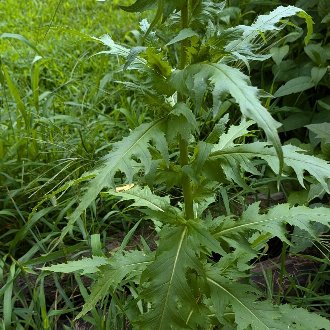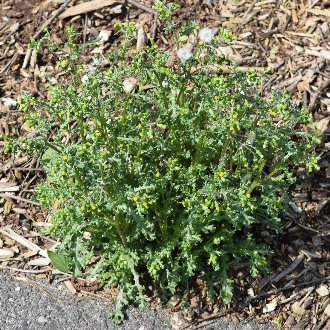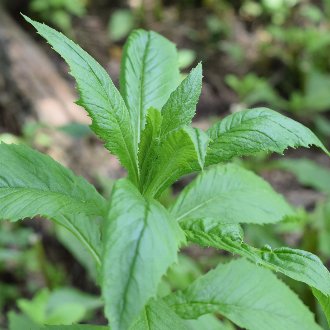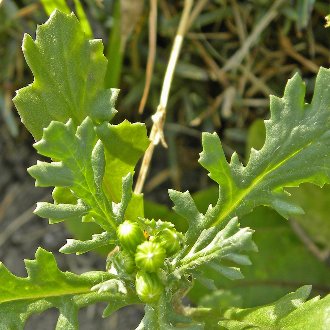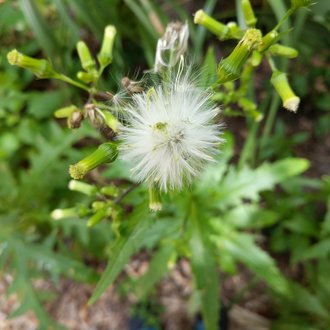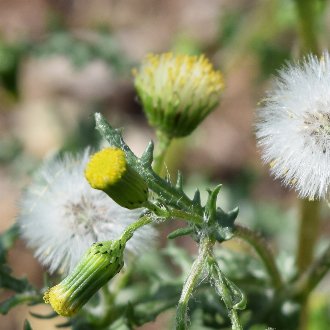American Burnweed vs Common Groundsel
This guide is under construction and has not been published yet. It may have errors. When in doubt, double-check other sources for definitive ID.These two annuals are sometimes confused, particularly small individuals of Erechtites hieraciifolius, as their flowers and seeds look similar. Although both have highly variable leaf shape, there are key differences in leaf shape and size. They are also easily told apart by size and growth habit, and can usually be told about by bloom time. Erechtites hieraciifolius is native and common throughout most of the eastern US, and ranges much farther south. Senecio vulgaris is introduced more common in the northeast and West Coast, and uncommon and scattered in the interior of the continent.
American Burnweed (Erechtites hieraciifolius) | Common Groundsel (Senecio vulgaris) |
A tall annual native to eastern North America, a pioneer species on sites with soil disturbed during the warm season. | A common annual with a very short lifecycle, native to Europe and introduced widely in North America, where it is more common in the northeast. |
Growth habit is upright, usually unbranched until the inflorescence. Plants can get much taller (frequently to 200cm or 6.5ft, occasionally to 250cm / 8 feet.) Photo © Emmett Collins-Sussman, CC BY 4.0. | Growth habit is low and sprawling; some plants branch frequently near the base. Plants are much shorter (to 50cm /20 in but usually shorter.) Photo © , CC BY-SA 4.0. |
Leaves average larger (6-20cm long by 2-8cm wide), but often have less pronounced lobes. Leaf tips are much pointier, but leaf bases are relatively broader and bases of upper leaves clasp the stem. Photo © , CC BY-SA 4.0. | Leaves average smaller (2-10cm long by 0.5-2cm wide) and with more pronounced lobes. Leaf tips tends to be broader and rounder, but with sharp teeth, and leaf bases tend to be much narrower. Photo © M. Whitson, CC BY 4.0. |
Plants have a longer lifecycle with a more fixed timing, usually blooming August-September and almost never before June or after October except near their far southern range limits. Photo © Michael Kummer, Public Domain. | Plants have short life cycles and are opportunistic and flexible, blooming and setting seed at virtually any time of year, but are least likely to bloom June-September and most likely to bloom March-April, except near their far northern range limits where summer blooming is more common. Photo © , CC BY-SA 4.0. |
References & External Resources
These short lists show only links helpful for ID. For a complete list of references and resources also covering other aspects of ecology, visit the links section of the full article on each plant, which is the first entry here.



